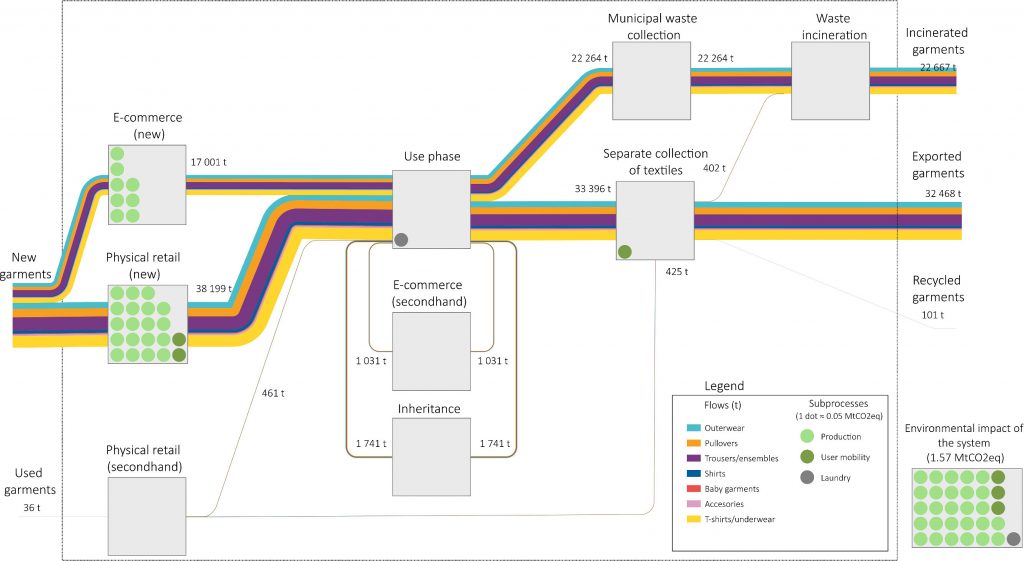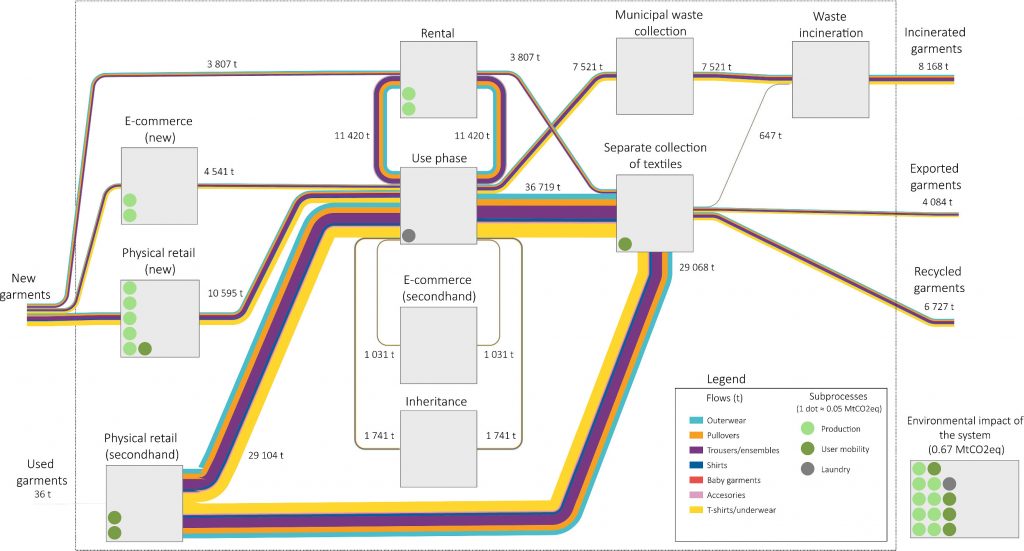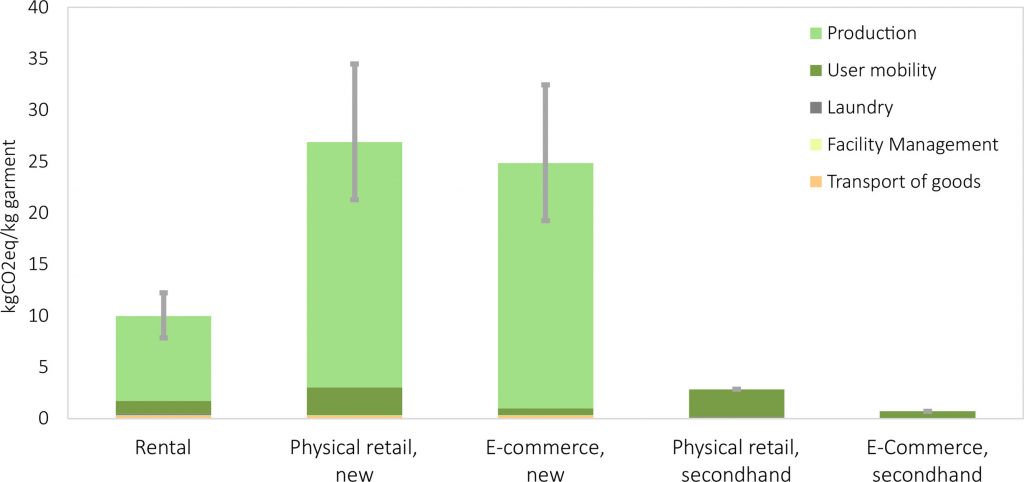A new Lasting publication by María Carolina Mora-Sojo, Kamila Krych, and Johan Berg Pettersen from NTNU presents an overview of the current clothing consumption in Norway and a potential circular alternative.
The article first maps the current flows of clothing and explains that the problem lies in the current linearity of the system. In 2018, 95% of clothing acquisitions in Norway were brand-new items (Figure 1). At their end-of-life, nearly all garments faced either exportation (58%) or incineration (41%). The authors performed a life-cycle assessment and estimated the total impacts of the system.

Circular alternative
The authors use other data sources to suggest that many of the exported clothes are in good condition, and could have a second life within Norway. Some garment types are also suitable for rental. If both reuse and rental were implemented at a national scale, we could increase the circularity and decrease the environmental impacts of the system by around 50% (Figure 2).

Environmental impacts of clothing acquisition
Evaluation of environmental impacts shows that the consumption of new garments is the most emission-intensive acquisition channel. Secondhand or inherited garments have no production impacts due to cut-off allocation, while rented garments have a third of production impacts, given that each garment is rented three times. The climate change impacts of consumer mobility are the highest for physical stores located in the city center, and slightly lower for rented garments because rented garments are fetched from pick-up points (Figure 3).

Conclusion and recommendation
Even with the demonstrated circularity increase, the environmental benefits reach only a certain level, and further impact reductions would require limiting clothing consumption. The authors estimated that an average Norwegian consumed around 11 kg of clothes in 2018, and this number should decrease in the future if more environmental savings are to be seen.
Reference
Mora-Sojo, M. C., Krych, K., & Pettersen, J. B. (2023). Evaluating the current Norwegian clothing system and a circular alternative. Resources, Conservation and Recycling, 197, 107109. https://doi.org/10.1016/j.resconrec.2023.107109